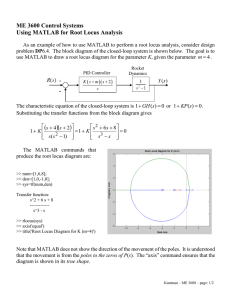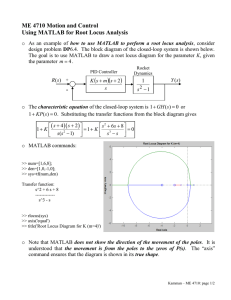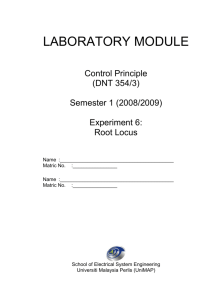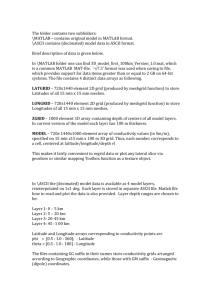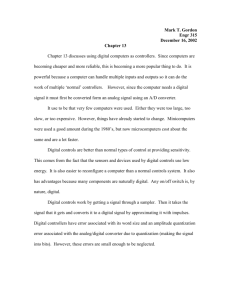Word
advertisement
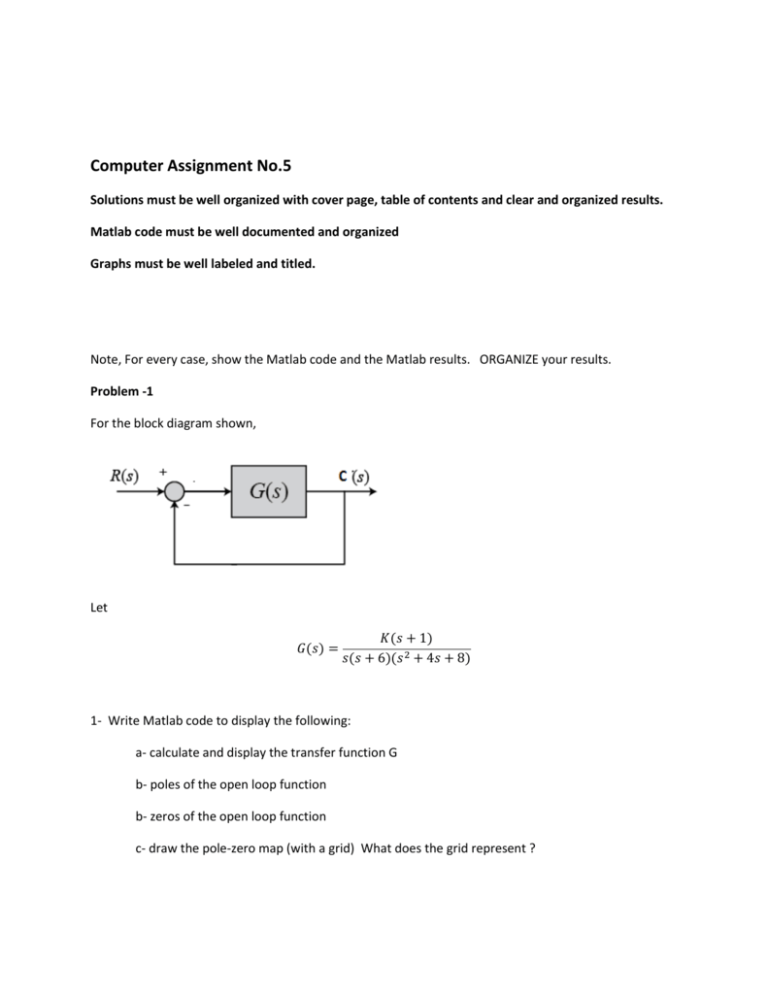
Computer Assignment No.5 Solutions must be well organized with cover page, table of contents and clear and organized results. Matlab code must be well documented and organized Graphs must be well labeled and titled. Note, For every case, show the Matlab code and the Matlab results. ORGANIZE your results. Problem -1 For the block diagram shown, Let 𝐺(𝑠) = 𝐾(𝑠 + 1) 𝑠(𝑠 + 6)(𝑠 2 + 4𝑠 + 8) 1- Write Matlab code to display the following: a- calculate and display the transfer function G b- poles of the open loop function b- zeros of the open loop function c- draw the pole-zero map (with a grid) What does the grid represent ? 2- Write a Matlab code to do the following: a) draw the root locus of the open-loop function b- on the root locus, show the gain necessary to obtain a damping ratio of 0.6 (IF NOT POSSIBLE, EXPLAIN WHY) and the corresponding complex poles. C- on the root locus, show the gain necessary to obtain a damping ratio of 0.8 (IF NOT POSSIBLE, EXPLAIN WHY) 3- On the root locus(new plot) show the location of every pole with the gain = 15. 4On the root locus, show the gain and the corresponding frequency at the marginally stable response (if applicable) 5What is the maximum possible damping on the complex poles? Explain how you obtained your result . 6- Investigation of the closed loop system a) Using Matlab and a value of K obtained in 2-b, determine the closed loop transfer function Hint, use the command: Gcl=feedback(K*G,1) b) determine the poles of the closed loop transfer function obtained in (6-a) above. c) do the complex poles match those predicted in 2-b ? 7- Let K = 15, using Matlab, calculate the new locations of the poles of the closed loop system. 8- How do the results of (7) compare to those of (3)? Problem -2 𝐺(𝑠) = 𝐾(𝑠 + 8) (𝑠 + 1)(𝑠 + 4)(𝑠 + 10) 1- Write Matlab code to display the following: a- calculate and display the transfer function G b- poles of the open loop function b- zeros of the open loop function c- draw the pole-zero map (with a grid) What does the grid represent ? 2- Write a Matlab code to do the following: a) draw the root locus of the open-loop function b- on the root locus, show the gain necessary to obtain a damping ratio of 0.4 and show the corresponding complex poles. 3- On the root locus(new plot) show the location of every pole with the gain = 2. 4On the root locus, show the gain and the corresponding frequency at the marginally stable response (if applicable) 5- What is the location of the breakaway point? Also, what is the gain at that point? 6- Investigation of the closed loop system a) Using Matlab and a value of K obtained in 2-b, determine the closed loop transfer function Hint, use the command: Gcl=feedback(K*G,1) b) determine the poles of the closed loop transfer function obtained in (6-a) above. c) do the complex poles match those predicted in 2-b ? 7- Let K = 2, using Matlab, calculate the new locations of the poles of the closed loop system. 8- How do the results of (7) compare to those of (3)?
